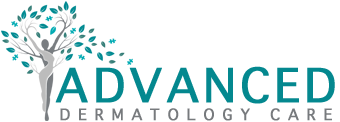Squamous Cell Carcinoma (SCC)

Squamous cell carcinoma: This man’s skin has been badly damaged by years of sun exposure. He has a squamous cell carcinoma on his face.
Squamous cell carcinoma (SCC) is the second most common type of skin cancer. About 700,000 new cases of this skin cancer are diagnosed in the United States each year.
This skin cancer tends to develop on skin that has been exposed to the sun for years. It is most frequently seen on sun-exposed areas, such as the head, neck, and back of the hands. Women frequently get SCC on their lower legs.
It is possible to get SCC on any part of the body, including the inside of the mouth, lips, and genitals.
SCC can spread to (metastasize) to other parts of the body, although this is generally rare. With early diagnosis and treatment, SCC is highly curable.
Symptoms of SCC, include:
- A bump or lump on the skin that can feel rough.
- As the bump or lump grows, it may become dome-shaped or crusty and can bleed.
- A sore that doesn’t heal, or heals and returns.
- Flat, reddish, scaly patch that grows slowly (Bowen’s disease).
- In rare cases, SCC begins under a nail, which can grow and destroy the nail.
SCC can begin in a pre-cancerous growth. Some SCCs begin in a pre-cancerous growth called an actinic keratosis (or AK). In adults 40 and older, it is believed that about 40 to 60 percent of SCCs begin in an AK.
Causes of Squamous Cell Carcinoma
Most SCC is caused by ultraviolet (UV) rays from the sun or tanning beds. Other causes include:
- Long-term exposure to cancer-causing chemicals, such as when a person smokes tobacco, is exposed to tar, drinks from a water supply that contains arsenic, or uses some insecticides or herbicides.
- A serious burn.
- Ulcer or sore on the skin that has been there for many months or years.
- Some types of the human papillomavirus (HPV).
Diagnosis & Treatment
As with a basal cell carcinoma, the only way to diagnose any type of skin cancer, including squamous cell carcinoma (SCC), is with a skin biopsy done as a quick and easy in-office procedure. Treatment options, include:
Excision: It involves numbing the area to be treated and cutting out any remaining tumor plus some normal-looking skin around the tumor. In our experience, the majority of SCCs are treated with a “standard” excision which can take anywhere from 15 to 30 minutes as an outpatient/in-office procedure.*
Mohs surgery: This procedure is reserved for larger SCCs or those on the head and neck.
Curettage and electrodessication: First, your dermatologist scrapes away the tumor. Then electricity is used to destroy any remaining cancer cells.
Photodynamic therapy (PDT): This treatment uses light to remove some very early skin cancers.
Chemotherapy cream: Creams containing Imiquimod or a chemotherapy drug, 5-fluorouracil (5-FU), can be used to treat SCC in the earliest stage or used to shrink the tumors before their excision.*
Radiation: This treatment is usually reserved for SCCs that cannot be cut out, or when cutting may not be the best choice. A patient may need 15 to 30 radiation treatments.
Outcome
In our experience and those reported in the literature, a standard excision and Mohs surgery offer the highest chance of cure for this treatable malignant skin tumor.*
*Disclaimer, results may vary from person to person.
Do you have any questions about Squamous Cell Carcinoma? If you would like to schedule an appointment with one of our dermatologists in our Los Alamitos or Agoura Hills office, please contact us for a consultation.
